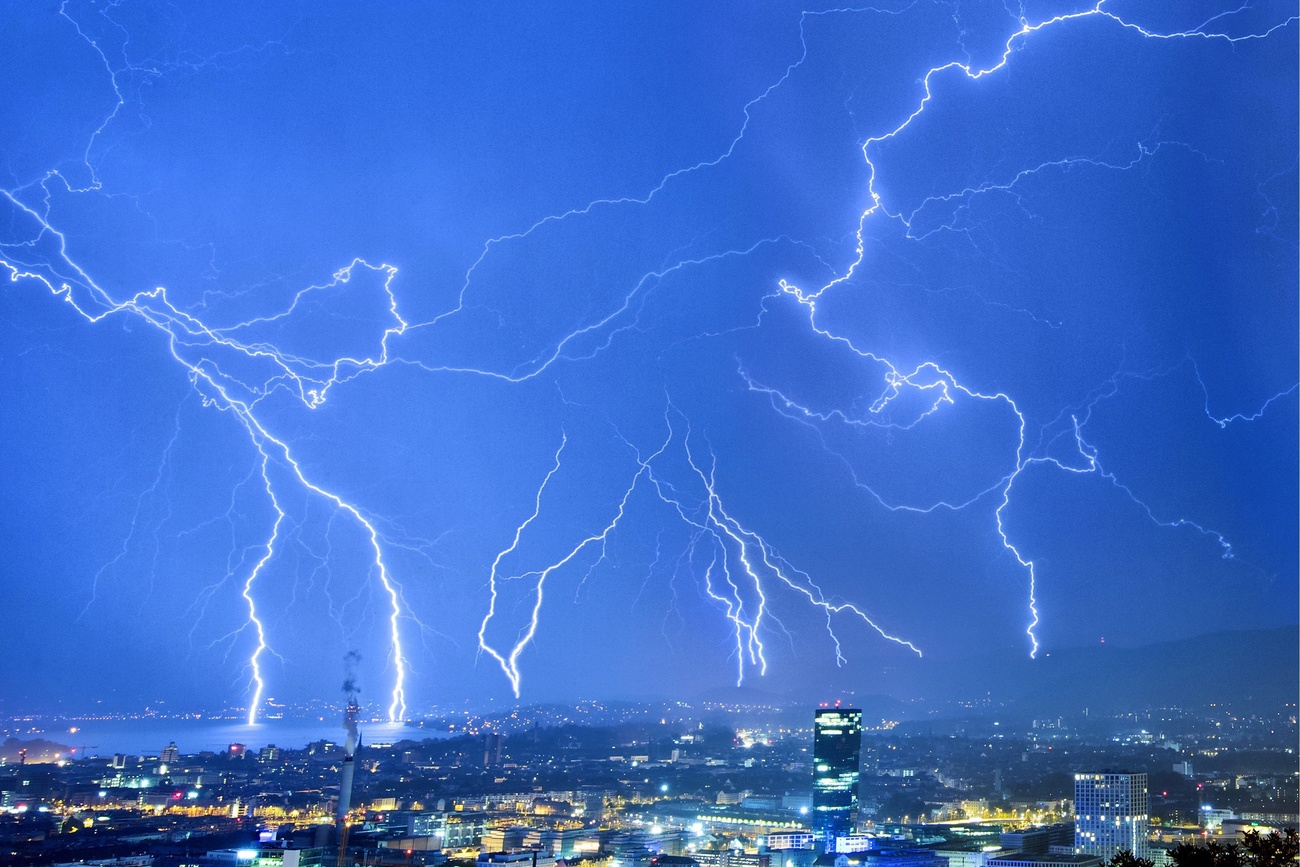
High-powered laser deflects lightning strikes

Researchers have used a high-powered laser beam pointing into the sky in northeastern Switzerland to divert lightning strikes. They claim it is a significant advance in lightning protection technology.
Scientists reported this week that they had succeeded in using a laser aimed at the sky from the top of Mount Santis in the Appenzell Alps in northeastern Switzerland to divert lightning strikes.
The scientists say their “Laser Lightning Rod” could safeguard critical infrastructure, including power stations, airports, wind farms and launchpads. Lightning causes billions of dollars in damage on buildings, communication systems, power lines and electrical equipment annually. It also kills thousands of people.
To carry out the experiment, the scientists transported their equipment to the top of the mountain (2,500 metres) using a gondola and helicopter. The beam was focused on the sky above a 124-metre-tall transmission tower belonging to telecommunications provider Swisscom.
In experiments during two months in 2021, intense laser pulses – 1,000 times a second – were emitted to redirect lightning strikes. All four strikes while the system was active were successfully intercepted. In the first instance, the researchers used two high-speed cameras to record the redirection of the lightning’s path by more than 50 metres. Three others were documented with different data.
“We have demonstrated for the first time that a laser can be used to guide natural lightning,” said physicist Aurelien Houard of Ecole Polytechnique’s Laboratory of Applied Optics in France, project coordinator and lead author of the research published in the journal Nature PhotonicsExternal link.
“An intense laser can generate on its path long columns of plasmas in the atmosphere with electrons, ions and hot air molecules,” Houard said, referring to positively charged particles called ions and negatively charged particles called electrons.
“We have shown here that these plasma columns can act as a guide for lightning,” Houard added. “It is important because it is the first step towards a laser-based lightning protection that could virtually reach a height of hundreds of metres or a kilometre with sufficient laser energy.”

More
Using AI, Switzerland researchers crack the code of lightning
The laser device used in the experiment is the size of a large car and weighs more than 3 tons. It uses lasers from German industrial machine manufacturing company Trumpf Group. University of Geneva scientists also playing a key role in the experiments.
“Our work represents an important step forward in developing laser-based lightning protection for critical infrastructure such as airports, launch pads and power stations,” Jean-Pierre Wolf of the University of Geneva told the Financial Times.
This concept, first proposed in the 1970s, has worked in laboratory conditions, but until now not in the field.
Lightning rods, dating back to Benjamin Franklin’s time, are metal rods atop buildings, connected to the ground with a wire, that conduct electric charges lightning strikes harmlessly into the ground. Their limitations include protecting only a small area.
Houard says 10 to 15 years more work would be needed before the Laser Lightning Rod can be used more widely. One concern is avoiding interference with airplanes in flight.

In compliance with the JTI standards
More: SWI swissinfo.ch certified by the Journalism Trust Initiative
















![The four-metre-long painting "Sonntag der Bergbauern" [Sunday of the Mountain Farmers, 1923-24/26] had to be removed by a crane from the German Chancellery in Berlin for the exhibition in Bern.](https://www.swissinfo.ch/content/wp-content/uploads/sites/13/2025/12/01_Pressebild_KirchnerxKirchner.jpg?ver=a45b19f3)











You can find an overview of ongoing debates with our journalists here . Please join us!
If you want to start a conversation about a topic raised in this article or want to report factual errors, email us at english@swissinfo.ch.